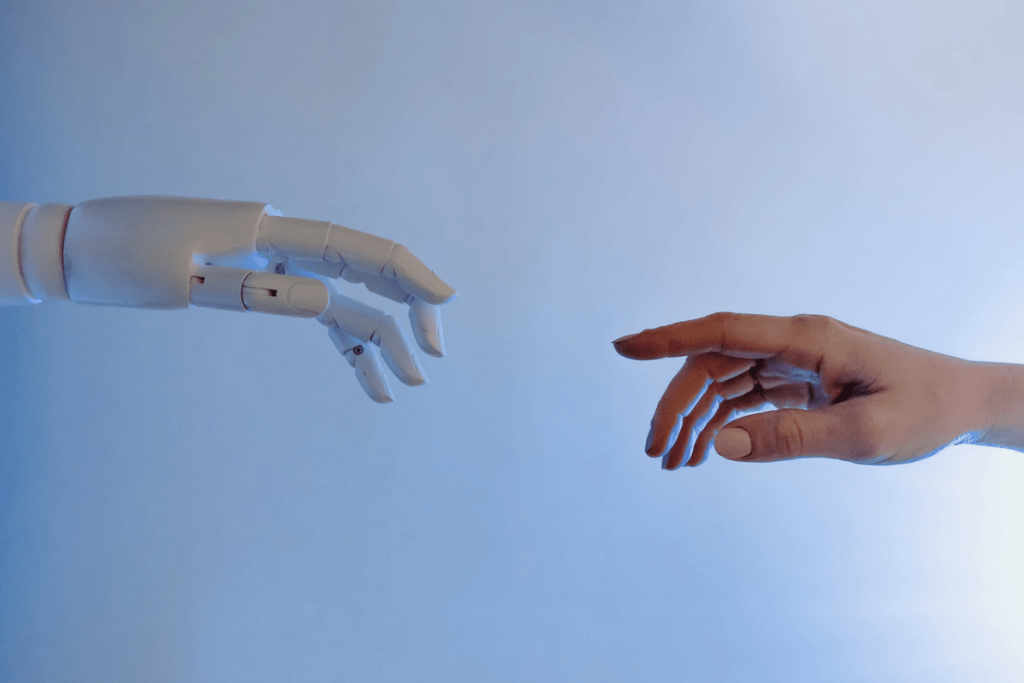
AI-Powered Cybersecurity: The Future of Digital Defence
As digital threats become increasingly sophisticated, the world of cybersecurity finds itself in an ongoing race to stay one step ahead. The advent of artificial intelligence (AI) has provided a game-changing tool in this battle, reshaping the landscape of digital defence. In this blog, we will delve deep into the world of AI-powered cybersecurity, exploring its potential, applications, benefits, and challenges.
What is AI-powered Cybersecurity?
Stepping into the limelight of the digital defence arena, AI-powered cybersecurity is no mere guard but a vigilant sentinel. Harnessing the razor-sharp prowess of machine learning and a suite of AI wizardry, it monitors, scrutinises, and combats menacing cyber threats.
Breaking away from the shackles of age-old systems bound by rigid rules and predictable signatures, these AI guardians dynamically evolve, absorbing wisdom from vast data oceans, empowering them to spot and counter fresh threats with unparalleled agility and real-time reflexes.

Applications of AI in Cybersecurity
Dive deep into the digital ocean, and a titan emerges, holding a beacon of hope against the shadows of cyber threats. Now, let’s unmask this titan, breaking down its capabilities, strengths, and the challenges it faces:
Predictive Analytics
AI can analyse vast amounts of data and detect patterns, allowing for predictive modelling of potential threats. This enables proactive defence measures before attacks materialise.
Real-world example: FireEye is a well-regarded cybersecurity firm that uses predictive analytics to offer advanced threat intelligence. By analysing vast data from millions of incidents, FireEye can forecast potential attack vectors and emerging threats, offering clients a head-start in bolstering their defences.
Phishing Detection
Machine learning algorithms can scan emails and detect phishing attempts more accurately than traditional methods, ensuring better protection against email scams.
Real-world example: Barracuda Sentinel is a cloud-hosted service that utilises artificial intelligence to detect and prevent email phishing attempts in real time. It reviews internal communication patterns to detect anomalies, ensuring that even the most sophisticated spear-phishing attempts don’t go unnoticed.
Behaviour Analysis
I can monitor user behaviour, identify anomalies, and detect potential insider threats or compromised accounts.
Real-world example: Darktrace employs machine learning to understand typical user and machine behaviours within a network. When it observes activities that deviate from the norm, such as unusual access requests or data transfers, it sends alerts or takes predefined actions, making it a sentinel against insider threats.
Malware Detection
Instead of relying solely on virus signatures, AI can analyse files’ behaviours and characteristics to detect and block unknown malware.
Real-world example: CylancePROTECT by BlackBerry leverages AI to analyse files and discern their intent. Instead of solely relying on signatures, which can become outdated, it observes files in execution and understands their true intention, effectively blocking never-before-seen malicious files.
Network Security
AI can monitor network traffic, identifying suspicious patterns and potential breach attempts, ensuring rapid response.
Real-world example: Cisco’s Stealthwatch uses machine learning to analyse network traffic and detect anomalies. It creates a baseline of typical network behaviours and then identifies deviations, like unexpected data transfers, offering real-time insights into potential security breaches.

Benefits of AI in Cybersecurity
In the vast and intricate realm of cybersecurity, where threats mutate with bewildering speed, artificial intelligence emerges as the unsung hero. There exist tangible, transformative advantages that AI brings to the table.
Real-time Threat Detection
In today’s digital era, threats emerge at the speed of light. Traditional methods often lag, leaving vulnerabilities exposed. However, with AI, we have a solution.
Take DeepArmor by SparkCognition, for instance. Leveraging deep Learning, it identifies and neutralises threats as they emerge, ensuring that cyber defences are always a step ahead. With its ability to process vast data sets swiftly, AI tools like these can detect and neutralise threats in real time.
Reduced False Positives
Every cybersecurity professional knows the fatigue caused by endless false alarms. Not only do they divert attention from real threats, but they also drain resources. Enter the world of machine learning.
Platforms like CrowdStrike Falcon utilise advanced algorithms to discern genuine threats from benign anomalies. By training on millions of data points, they reduce the noise and hone in on actual dangers, improving threat detection accuracy.
Adaptive Learning
The cyber landscape is ever-evolving, and what was a secure fortress today might be a vulnerability tomorrow. AI, however, remains ever-vigilant.
Systems like IBM Watson for Cyber Security constantly ingest threat intelligence, staying updated with the latest malicious tactics. These AI models digest this new information, adapt, and refine their defence mechanisms, ensuring the system remains cutting-edge and prepared for novel threats.
Automation
In a world where time is of the essence, automation becomes a beacon of efficiency. Routine scans, patching vulnerabilities, and responding to known threat signatures can be tedious and time-consuming.
AI-driven tools like Palo Alto Networks’ Cortex can automate these tasks, handling them with machine precision. By taking over these mundane chores, AI ensures consistent defence and liberates human resources to strategise and address more complex cybersecurity challenges.

Challenges and Considerations
Quality of Data
At the very heart of any AI model lies the data it feeds on. The age-old saying, “Garbage in, garbage out,” rings particularly true for AI in cybersecurity. For instance, if an AI system is trained primarily on outdated or region-specific cyber threats, it may need to prepare to handle new global cyber-attacks.
Moreover, biases in data can inadvertently introduce vulnerabilities. An AI system trained predominantly on older malware might overlook newer, more sophisticated threats. Ensuring clean, diverse, and representative data is paramount, as inaccurate or biased data can lead to critical security lapses, putting entire systems at risk.
Let’s imagine a company called “SecureTech”, which developed an AI tool using data on cyber threats from North America in the 2000s. Fast forward to 2023: one of their European clients gets hit by a new form of malware from Southeast Asia.
Since SecureTech’s tool was trained on older, region-specific threats, it failed to catch this new malware, leading to a significant security breach.
Potential for Manipulation
AI’s strengths, paradoxically, can also be its vulnerabilities. Cyber adversaries are evolving, and some now employ tactics that target AI systems directly. A method known as ‘adversarial attacks’ involves feeding AI systems specially crafted data designed to deceive.
For example, by subtly altering the code or behaviours of a malicious file, attackers might make it appear benign to AI detectors. The rise of such AI-specific attacks is a sombre reminder that while AI can bolster defences, it can also be a target itself, susceptible to sophisticated manipulations.
Over-reliance
AI is a powerful tool, but it’s not infallible. Like any tool, its effectiveness depends on how it’s employed. A common pitfall organisations face is over-relying on AI for all their cybersecurity needs. This could lead to complacency and a false sense of security.
Take, for example, anomaly detection. While an AI might flag an action as ‘typical’ based on historical data, a human expert might recognise it as a precursor to a new kind of attack. The synergy between human intuition and machine precision is crucial. Solely leaning on AI without human judgment can result in blindsides in the defence strategy.
Ethical Concerns
With great power comes great responsibility. Ethical challenges surface as AI systems delve deeper into monitoring, tracking, and analysing data. For instance, while monitoring employee behaviour might help detect insider threats, it also treads on thin ice concerning individual privacy rights.
If an AI system is monitoring network traffic, to what extent does it analyse personal messages? Where do we draw the line between security and privacy invasion? As AI’s role in cybersecurity expands, it’s imperative to establish robust ethical guidelines that address these dilemmas, ensuring that the quest for security doesn’t compromise fundamental rights.
The Future of AI-powered Cybersecurity
As we hitch a ride towards the looming realm of quantum computing, we’re reminded of Douglas Adams’ infinite and unpredictable universe. Navigating the new galaxy of cybersecurity threats feels almost like trying to grasp the significance of a supercomputer’s answer being ’42’.
But just as the ‘Hitchhiker’s Guide’ offers solace with its reassuring ‘Don’t Panic’ cover, AI is our Guide in this vast digital cosmos. It’s updating its own entries with sharper predictive analytics, autonomous Vogon-defying defence systems, and an affinity for the Internet of Things (IoT) that’s as tight as Ford Prefect’s fondness for towels.
Final Thoughts
AI-powered cybersecurity is not just a trend; it’s the future of digital defence. As cyber threats evolve, so too must our tools and strategies. By harnessing the power of AI, we can ensure a more secure digital landscape, protecting assets, data, and users.




